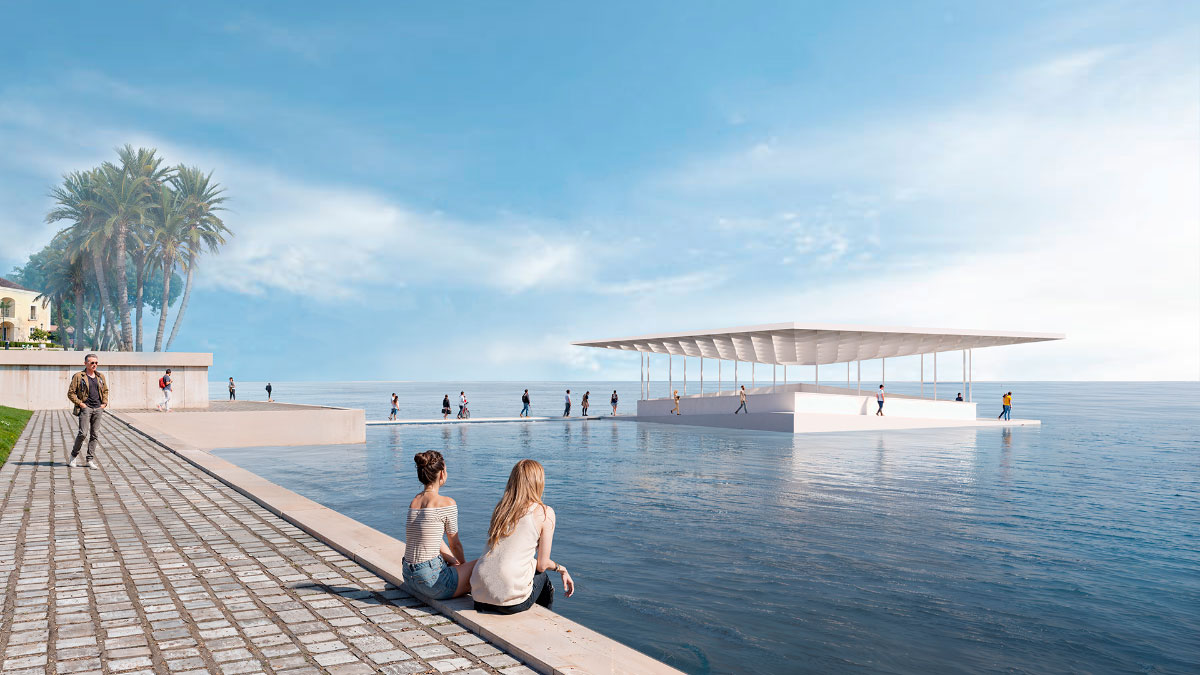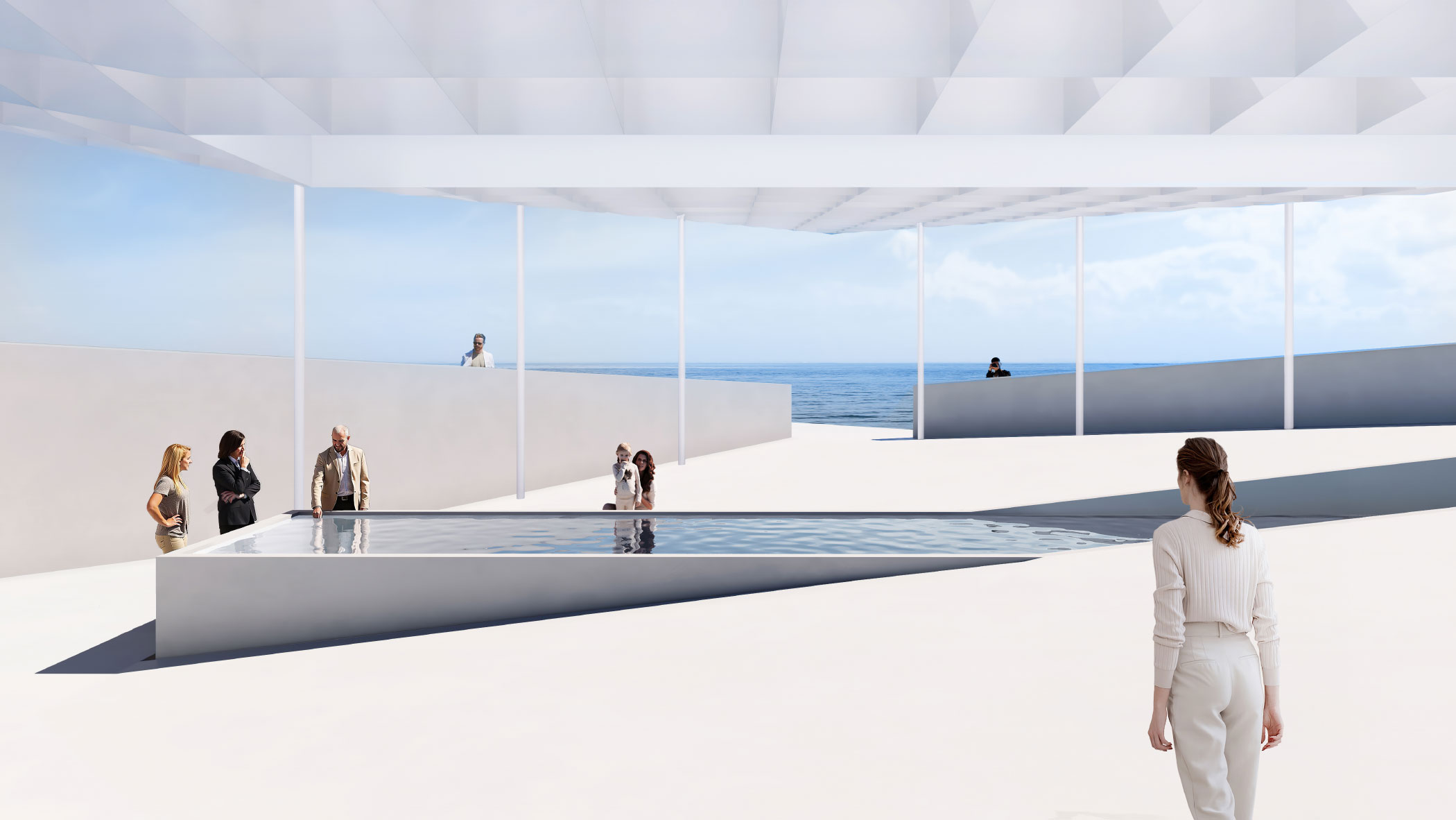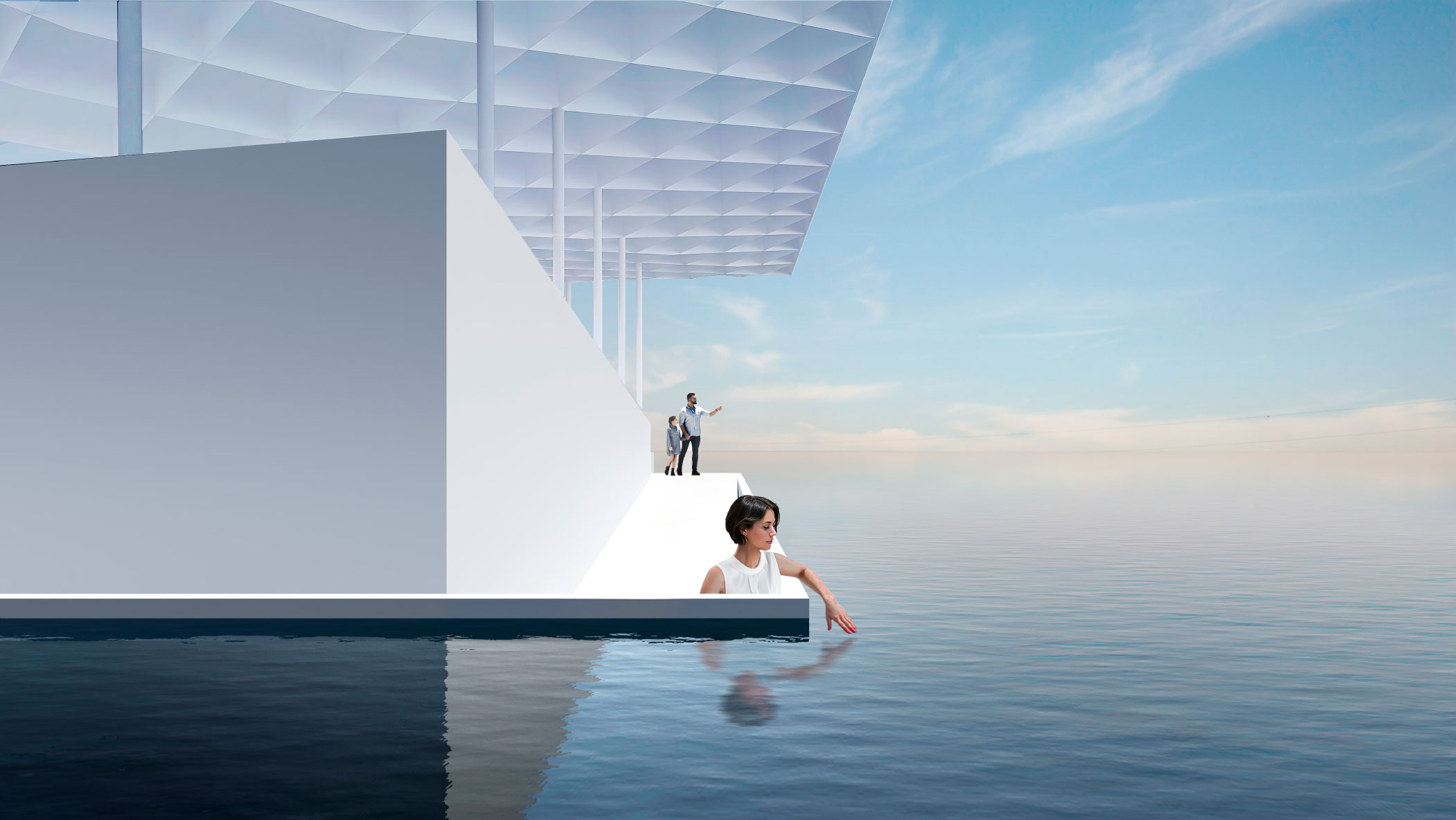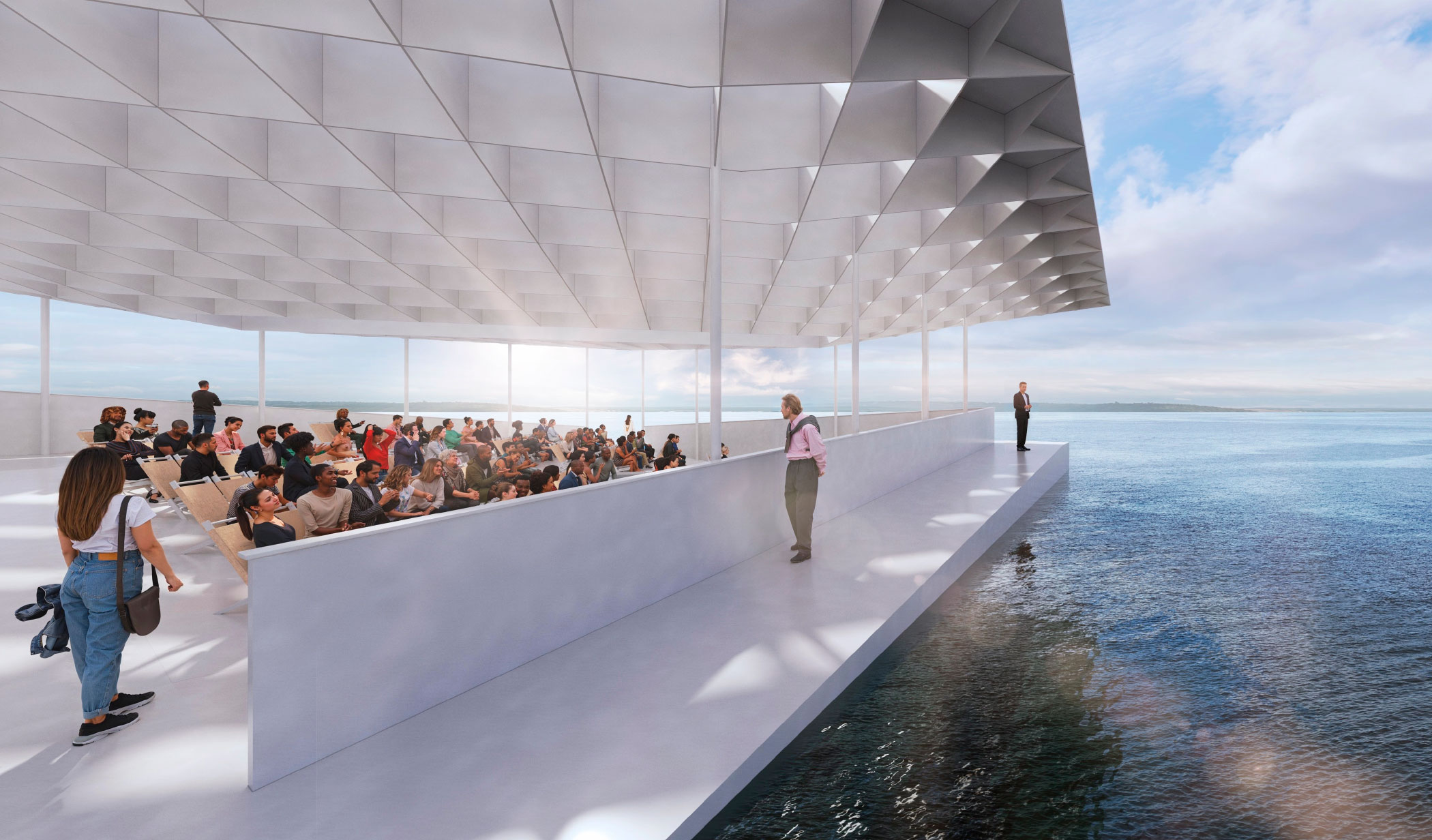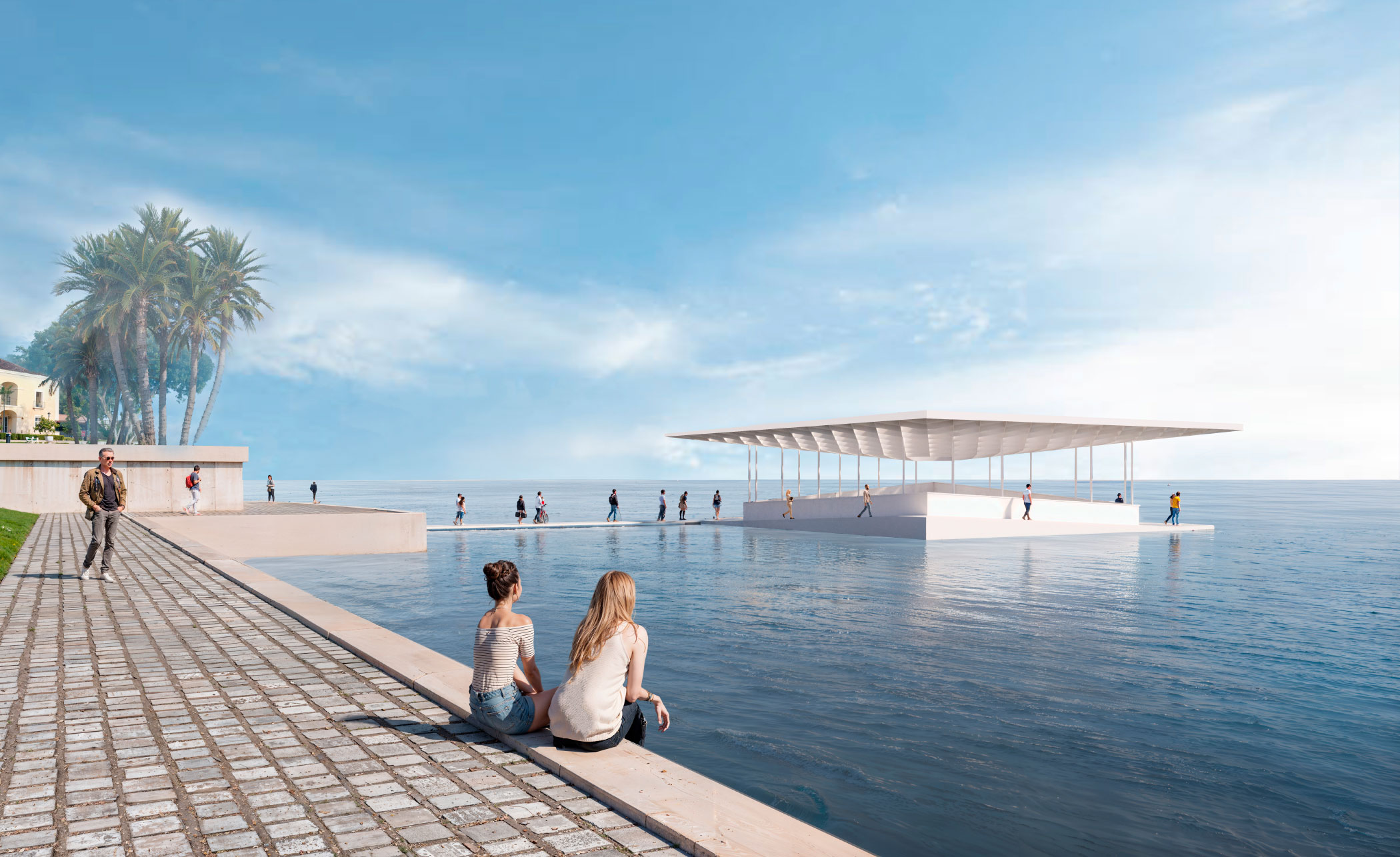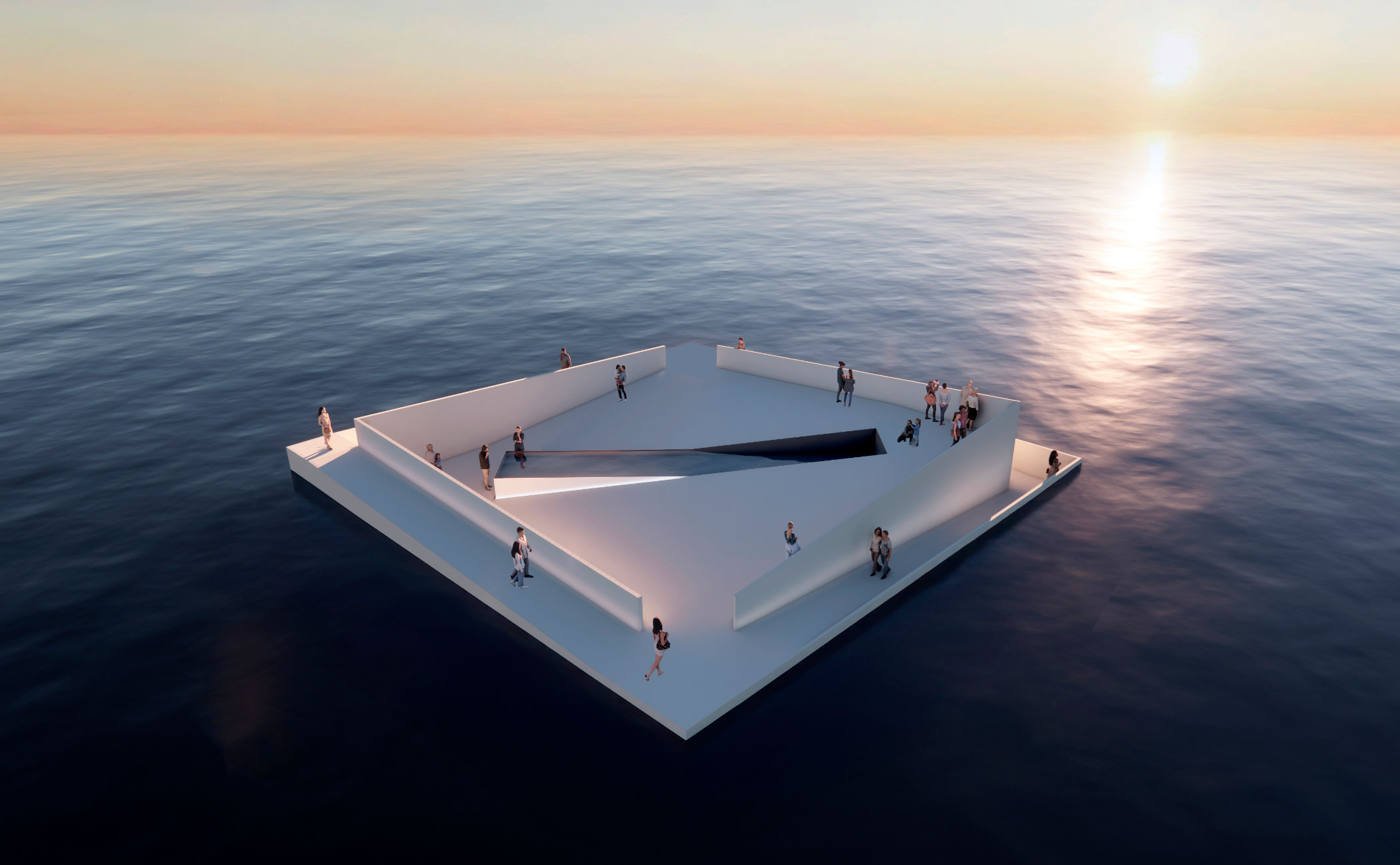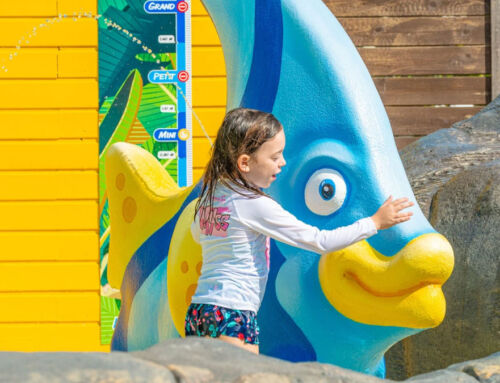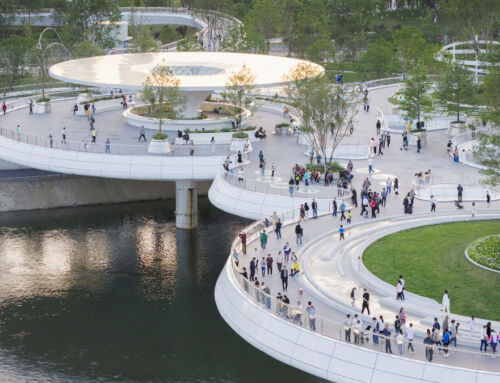The Turin-based Italian architecture studio CRA-Carlo Ratti Associati—”a design and innovation office that investigates the convergence of the natural and the artificial”—and the Boston-based American Höweler + Yoon Architecture—”whose work is deeply informed by social and cultural context”—have joined forces to create the project to which we dedicate this space. It is a floating plaza—or perhaps more accurately, a floating plaza-shaped object—with a surface area of 400 m², which “literally carves public space into the sea,” in a “physical dialogue” between the built environment, in other words, the artificial, and the forces of nature. It is called AquaPraça.
AquaPraça, a submersible structure whose design combines inclined planes to rise above the sea at one end, or to descend beneath its surface at the other, floats thanks to the principles of balance, displacement, and buoyancy defined by Archimedes. A hydraulic system that retains or releases water ensures this balance and buoyancy, ensuring the structure maintains “a minimal freeboard with the surrounding water level.” In this way, the public experiences sea level from a new perspective, immersed in it, “at eye level.”
AquaPraça was conceived with symbolic intent, but also as a “civic catalyst”: with a capacity of 150 people, the floating space will host workshops, exhibitions, debates, and other cultural events. Currently under construction in northeastern Italy, the floating plaza is a development of the architecture and design studios with support from the Italian Ministries of Foreign Affairs and International Cooperation and Environment and Energy Security, the Brazilian Ministry of Foreign Affairs, in collaboration with the Bari office of the International Centre for Advanced Mediterranean Agricultural Studies, the World Bank Group’s Connect4Climate program, and Bloomberg Philanthropies.
AquaPraça will be unveiled at the Venice Biennale on September 4th 2025, and will then travel “sustainably” to Belém, Brazil. Installed at the mouth of the Amazon River, AquaPraça will remain permanently in the city as part of its cultural infrastructure.
Sources and images: CRA-Carlo Ratti Associati, Höweler + Yoon Architecture.


